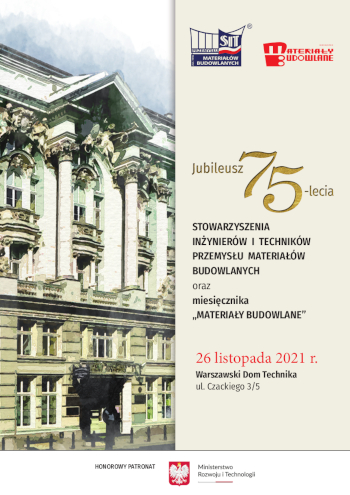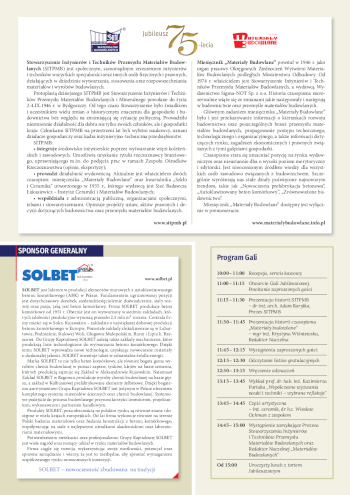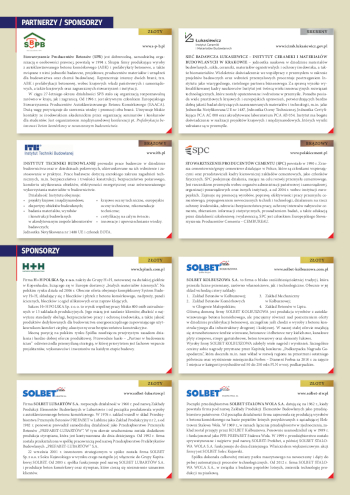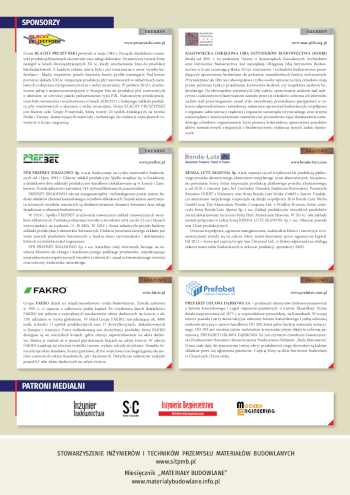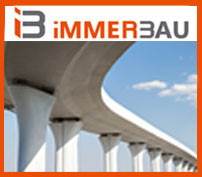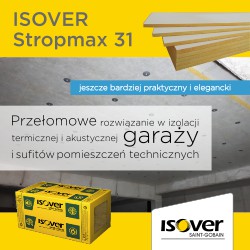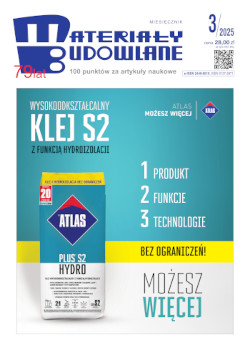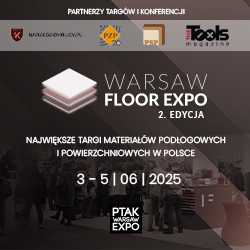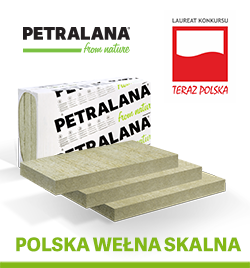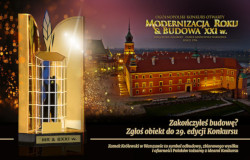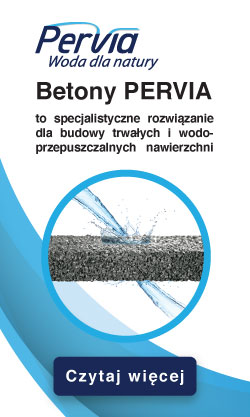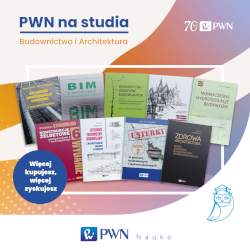Symulacje temperatury CFAST i FDS w rozszczelnionym mieszkaniu – porównanie wyników modelowania z danymi eksperymentalnymi
Open Access (Artykuł w pliku PDF)
citation/cytuj: Saleta D., Gałaj J., Tuśnio N. CFAST and FDS simulations of temperature in unsealed apartment – comparison of model results with experimental data. Materiały Budowlane. 2024. Volume 628. Issue 12. Pages 78-92. DOI: 10.15199/33.2024.12.09
dr inż. Damian Saleta, Fire University, Department of Safety Engineering and Civil Protection
ORCID: 0000-0003-1418-6996
dr hab. inż. Jerzy Gałaj, prof. uczelni, Fire University, Department of Safety Engineering
ORCID: 0000-0002-1509-6733
dr inż. Norbert Tuśnio, Fire University, Department of Safety Engineering and Civil Protection
ORCID:0000-0003-0878-8499
Correspondence address: Ten adres pocztowy jest chroniony przed spamowaniem. Aby go zobaczyć, konieczne jest włączenie w przeglądarce obsługi JavaScript.
DOI: 10.15199/33.2024.12.09
Original research paper / Oryginalny artykuł naukowy
Abstract. This paper presents the validation of the CFAST and FDS models for a fire in an unsealed dwelling. The heat release rate was obtained from the Room Corner test and the experimental data from the full-scale fire test. The comparison concerned on the temperature distribution at selected points in the room. Two variants were used for the FDS simulation, the first with one fire source (an armchair) and no consideration of wind, and the second with two fire sources (an armchair and a sofa). In addition, the second variant used a 300-second delay for the second fire source and the wind, resulting from the full- -scale fire observation. The accuracy of temperature mapping with both models depends on the location of the measuring point in relation to the fire source and the vents. Equally importantly, the representation of the temperature characteristics in the FDS field model can also be significantly improved by taking into account the wind and the additional fire area for a component that starts to burn after a certain time.
Keywords: safety engineering; simulation and experimental tests; zone and field fire models; validation.
Streszczenie. W artykule przedstawiono walidację modeli CFAST i FDS w przypadku pożaru w rozszczelnionym mieszkaniu. Szybkość wydzielania ciepła otrzymano z testu Room Corner, a dane eksperymentalne z pełnoskalowego testu pożarowego. Porównanie dotyczyło rozkładu temperatury w wybranych punktach pomieszczenia. Do symulacji FDS zastosowano dwa warianty, pierwszy z jednym źródłem ognia (fotelem) i bez uwzględnienia wiatru oraz drugi z dwoma źródłami ognia (fotelem i kanapą). Ponadto, w wariancie drugim zastosowano 300-sekundowe opóźnienie drugiego źródła pożaru oraz wiejący wiatr, wynikające z obserwacji pożaru w pełnej skali. Dokładność odwzorowania temperatury za pomocą obu modeli zależy od lokalizacji punktu pomiarowego w stosunku do źródła pożaru i otworów wentylacyjnych. Odwzorowanie charakterystyki temperatury w modelu polowym FDS można znacznie poprawić przez uwzględnienie wiatru i dodatkowej powierzchni pożaru elementu, który zaczyna się palić po pewnym czasie.
Słowa kluczowe: inżynieria bezpieczeństwa; testy symulacyjne i eksperymentalne; strefowe i polowe modele pożarów; walidacja.
Literature
[1] Peacock RD, Forney G, Reneke P. CFAST – Consolidated Fire and Smoke Transport (Version 7) Volume 3: Verification and Validation Guide, NIST Technical Note 1889v3, National Institute of Standards and Technology, Gaithersburg, Maryland, USA, 2023.
[2] Sheppard DT, Klein BW. Burn Tests in Two Story Structure with Hallways, Technical report, ATF Laboratories, Ammendale, Maryland, USA, 2009.
[3] McGrattan K. Evaluation of Fire Model for Nuclear Power Plant Applications, International Panel Report, NISTIR 7338, National Institute of Standards and Technology, Gaithersburg, Maryland, USA, 2007.
[4] Foote KL. LLNL Enclosure Tests Fire Tests Data Report, Technical report UCID-21236, Lawrence Livermore National Laboratory, Livermore, USA, 1987.
[5] Lee BT. Effect of Wall and Room Surface on the Rates of Heat, Smoke and Carbon Monoxide Production in a Park Lodging Bedroom Fire, NBSIR 85-2998, National Bureau of Standards, Gaithersburg, Maryland, USA, 1985.
[6] Peacock RD, Davis S, Lee BT. Experimental Data Set for the Accuracy Assessment of Room Fire Models, NBSIR 88-3752, National Bureau of Standards, Gaithersburg, Maryland, USA, 1988.
[7] Hamins A, Maranghides A, Johnsson EL, Donelly MK, Yang JC. Mulholland GW, Anleitner RL. Report of Experimental Results for the International Fire Model Benchmarking and Validation Exercise 3, Special Publication 1013-1, National Institute of Standard and Technology, Gaithersburg, Maryland, USA, 2006.
[8] Klote JH. Project Paln for Full Scale Smoke Movement and Smoke Control Tests, NBSIR 88-3800, National Bureau of Standards, Gaithersburg, Maryland, USA, 1988.
[9] Manzello SL, Park SH, Mizukami T, Benz DP. Measurement of Thermal Properties of Gypsum Board at Elevated Temperatures, In Proceedings of the Fifth International Conference on Structures in Fire, Nanyang Technological University, Singapore, 2008, pp. 656-665.
[10] Madrzykowski D, Weinschenk C. Impact of Fixed Ventilation on Fire damage Patterns in Full-Scale Structures, Technical report, Underwriters Laboratories, Firefighter Safety Research Institute, Columbia, USA, 2019.
[11] Opert KM. Assessment of Natural Vertical Ventilation for Smoke and Hot Gas Layer Control in a Residential Scale Structure, praca magisterska, University of Maryland, Baltimore, USA, 2012.
[12] Hostikka S, Kokkala M, Vaari J. Experimental Study of the Localized Room Fires, NFDC2 Test Series, VTT Research Notes 2104, VTT Building and Transport, Espoo, Finlandia, 2001.
[13] Hamins A, Maranghides A, McGrattan KB, Johnsson E, Ohlemiller T, Donelly M, Yang J, Mulholland G, Prasad K, Kukuck S, Anleitner R, McAllister T. Federal Building and Fire Safety Investigation of the World Trade Center Disaster: Experiments and Modeling of Structural Steel Elements Exposed to Fire, NIST NCSTAR 1-5B, National Institute of Standards and Technology, Gaithersburg, Maryland, USA, 2005.
[14] Janssens ML, Tran HC. Data Reduction of Room Tests for Zone Model Validation, Journal of Fire Sciences, 10, 1992, str. 528-555.
[15] Bailey JL, Tatem PA. Validation of Fire/Smoke Spread Model (CFAST) Using Ex-USS SHADWELL Internal Ship Conflagration Control (ISCC) Fire Tests, Report NRL/MR/6180-95-7781, Navy Technology Center for Safety and Survivability Chemistry Division, Washington DC, USA, 1995.
[16] McGrattan K, Hostikka S, Floyd J, McDermott R, Vanella M, Mueller E. Fire Dynamics Simulator Technical Reference Guide Volume 3: Validation, NIST Special Publication 1018-3 Sixth Edition, National Institute of Standards and Technology, Gaithersburg, Maryland, USA, 2024.
[17] Lock A, Bundy M, Johnsson EL, Kim SC, Ko GH, Hwang C, Fuss P, Harris R. Experimental Study of Effects of Fuel Type, Fuel Distribution, and Vent Size on Full-Scale Underventilated Compartment Fires in ISO 9705 Room, NIST Technical Note 1603, National Institute of Standards and Technology, Gaithersburg, Maryland, USA, 2008.
[18] McGrattan KB, Selepak MJ, Hnetkovsky EJ. The Influence of Walls, Corners and Enclosures on Fire Plums, NIST Technical Note 1084, National Institute of Standards and Technology, Gaithersburg, Maryland, USA, 2018.
[19] McKinnon M, Weinschenk C. Validation of CFD Fire Model Pressure Predictions for Modern Residential Style Structures, Fire Safety Journal, 126 (103466), 2021, s. 1-7.
[20] Wahlqvist J, Van Hees P. Validation of FDS for Large-scale Well-confined Mechanically Ventilated Fire Scenarios with Emphasis on Predicting Ventilation System Behavior, Fire Safety Journal, 62, 2013, s. 102-114.
[21] Salley MH, Kassawara RP, Nuclear Power Plant Fire Modeling Application Guide, NUREG-1934, EPRI 1019195, U.S. Nuclear Regulatory Commission, Washington DC, Electric Power Research Institute, Palo Alto, California, USA, 2010.
[22] William LO, Timothy GT. Verification and validation benchmarks, Nuclear Engineering and Design, vol. 238, Issue 3, pp. 716-743, 2008, https:// doi.org/10.1016/j.nucengdes.2007.02.032.
[23] Sekret R, Saleta D, Sztarbała G, Smardz P. Comparison of CFD Modelling with Fire Tests, Proceedings of International Conference Application of Structural Fire Engineering, Prague 19-20 April 2013, Czech Republic.
[24] Audouin L, Chandra L, Consalvi J-L, Gay L, Gorza E, Hohm V, Hostikka S, Ito T, Klein-Hessling W, Lallemand C, Magnusson T, Noterman N, Park JS, Peco J, Rigollet L, Suard S, Van-Hees P. Quantifying differences between computational results and measurements in the case of a large-scale well-confined fire scenario, Nuclear Engineering and Design, vol. 241, Issue 1, pp. 18-31, 2011, https://doi.org/10.1016/j.nucengdes.2010.10.027.
[25] Audouin L, Rigollet L, Prétrel H, Le Saux W, Röwekamp M. OECD PRISME project: Fires in confined and ventilated nuclear-type multi-compartments – Overview and main experimental results, Fire Safety Journal, vol. 62, Part B, pp. 80-101, 2013, https://doi.org/10.1016/j.firesaf.2013.07.008.
[26] McGrattan K, Baum H, Floyd J, Hostikka S, McDermott R, Mell W, Rehm R, Fire Dynamics Simulator (Version 5) Technical Reference Guide (Volumes 1-3), NIST Special Publication 1018-5, 2010.
[27] PN-ISO 9705:1999. Fire protection – fire testing – testing of surface products in a full-size room.
[28] Fliszkiewicz M, Krauze A, Maciak T. Testing the effectiveness of designed smoke ventilation systems using CFD simulations, SGSP Scientific Journals, t. 43, 2012, s. 13-35.
[29] Jones WW, Peacock RD, Forney GP, Reneke PA. Verification and Validation of CFAST, A Model of Fire Growth and Smoke Spread. NIST Internal Report 7080, Gaithersburg 2004.
[30] Office of Nuclear Regulatory Research (RES), Electric Power Research Institute (EPRI), Verification and Validation of Selected Fire Models for Nuclear Power Plant Applications: Fire Dynamics Simulator, NUREG-1824, Volume 7, United States Nuclear Regulatory Commission, Washington 2007.
[31] Williamson J, Beyler C, Floyd J. Validation of Numerical Simulations of Compartment Fires with Forced or Natural Ventilation Using the Fire and Smoke Simulator (FSSIM), CFAST and FDS. Fire safety science-proceedings of The Tenth International Symposium, Fire Safety Science, 10:1277- 1288, 2011, doi: 10.3801/IAFSS.FSS.10-1277.
[32] Floyd JE, Comparison of CFAST and FDS for Fire Simulation with the HDR T51 and T52 Tests. NIST Internal Report 6866, Gaithersburg 2002.
[33] Tavelli S, Rota R, Derudi M. A Critical Comparison Between CFD and Zone Models for the Consequence Analysis of Fires in Congested Environments. Chemical Engineering Transactions, 36, 247-252, 2014, doi: 10.3303/ CET1436042.
[34] Gałaj J, Saleta D. Impact of Apartment Tightness on the Concentrations of Toxic Gases Emitted During a Fire, Sustainability, 12 (1): 223, 2020; https://doi.org/10.3390/su12010223.
[35] Gałaj J, Saleta D. Impact of Apartment Tightness on Temperature Variability during a Fire, Int. J. Environ. Res. Public Health, 17 (12): 4590, 2020; https://doi.org/10.3390/ijerph17124590.
[36] Saleta D, Tekielak-Skałka I, Sekret R. Checking the usefulness of the FDS program when assessing the development of a fire in a sealed apartment, Fire Safety and Technology, vol. 3, 2013, pp. 59-68.
[37] Kawagoe K, Sekine T. Estimation of Fire Temperature Rise Curves in Concrete Buildings and its Application. Bulletin of Japan Association for Fire Science and Engineering, 1963; 13:1–12.
[38] Maślak M. Fire durability of steel bar structures, Cracow University of Technology Publishing House, Monograph 370, Cracow, 2008, s 17-29.
[39] Abramowicz M, Kowalski R, Wróbel P. The course of a design fire, controlled by ventilation, determined on the basis of parametric temperature-time curves, [in:] Szcześniak Wacław Edward, Zbiciak Artur (ed.): Theoretical foundations of civil engineering: Polish-Ukrainian-Lithuanian, vol. 17, Publishing House of the Warsaw University of Technology, 2009, pp. 343-350.
Received: 02.08.2024 / Artykuł wpłynął do redakcji: 02.08.2024 r.
Revised: 18.11.2024 / Otrzymano poprawiony po recenzjach: 18.11.2024 r.
Published: 20.12.2024 / Opublikowano: 20.12.2024 r.
Materiały Budowlane 12/2024, strona 78-92 (spis treści >>)




